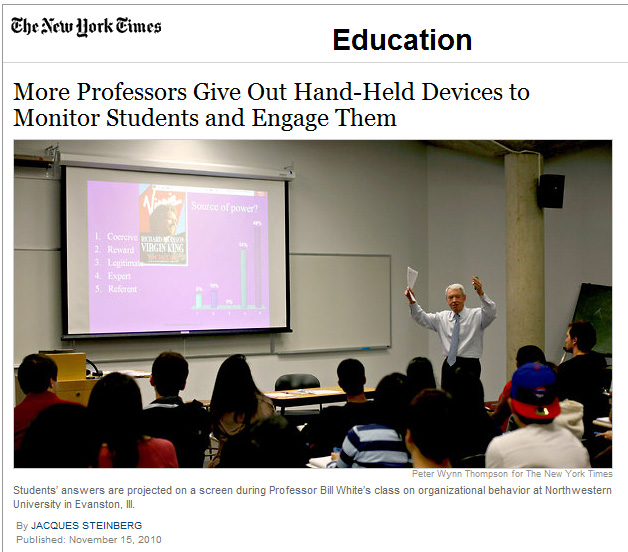Some excerpts:
Though the technology is relatively new, preliminary studies at Harvard and Ohio State, among other institutions, suggest that engaging students in class through a device as familiar to them as a cellphone — there are even applications that convert iPads and BlackBerrys into class-ready clickers — increases their understanding of material that may otherwise be conveyed in traditional lectures.
The clickers are also gaining wide use in middle and high schools, as well as at corporate gatherings. Whatever the setting, audience responses are received on a computer at the front of the room and instantly translated into colorful bar graphs displayed on a giant monitor.
Professor White acknowledged, though, that the clickers were hardly a silver bullet for engaging students, and that they were just one of many tools he employed, including video clips, guest speakers and calling on individual students to share their thoughts.
“Everyone learns differently,” he said. “Some learn watching stuff. Some learn by listening. Some learn by reading. I try to mix it all into every class.”
Many of Professor White’s students said the highlight of his class was often the display of results of a survey-via-clicker, when they could see whether their classmates shared their opinions. They also said that they appreciated the anonymity, and that while the professor might know how they responded, their peers would not.









